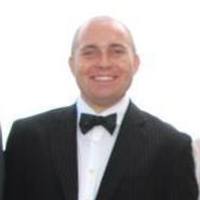Specialized iNANO Lecture: Insight into ion water interactions in amorphous carbonates
Anders Jensen, Max Planck Institute of Colloids and Interfaces, Potsdam, Germany
Info about event
Time
Location
Meeting room 1512-320, Dept. of Chemistry, Langelandsgade 140, 8000 Aarhus C

Anders Jensen
Max Planck Institute of Colloids and Interfaces
Potsdam, Germany
Insight into ion water interactions in amorphous carbonates
Amorphous calcium carbonate(ACC) plays a central role in biomineral formation, especially in invertebrates such as mussels. The biomineral formation process is highly regulated to control morphology, composition and mineralization site to name a few. However, synthetically pure ACC has proven highly unstable and readily crystallize within minutes and would not be very suitable for biomineralisation as the crystallization process would be hard to control. Therefore biogenic ACC often incorporates stabilizers such as Mg2+. It has long been though that Mg2+ stabilizes ACC due to its strong binding energy with water compared to that of Ca. However, very little is understood about how water interacts with the ions in ACC and amorphous magnesium carbonate(AMC).
Here, we studied the structural relationship between water and the ions in ACC and AMC using a combination of neutron and x-ray total scattering using empirical potential structural refinement(EPSR). This showed us that the Mg ion adopt an octahedral coordination sphere, whereas Ca can adopt several different coordination spheres. Suggesting that the local environment of Mg is significantly more constrained then that of the Ca ion. Interestingly, Mg coordinates less water than Ca due to it lower coordination number and therefore leaves a larger amount of water in the system that is not interacting directly with the cation, suggesting that the magnesium-water interaction is not a stabilizing effect at the hydration level relevant for biogenic ACC.
Host: Associate professor Henrik Birkedal, iNANO & Dept. of Chemistry, Aarhus University